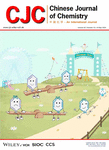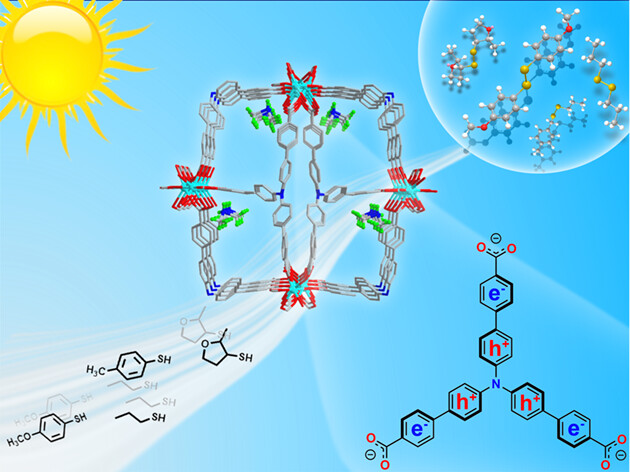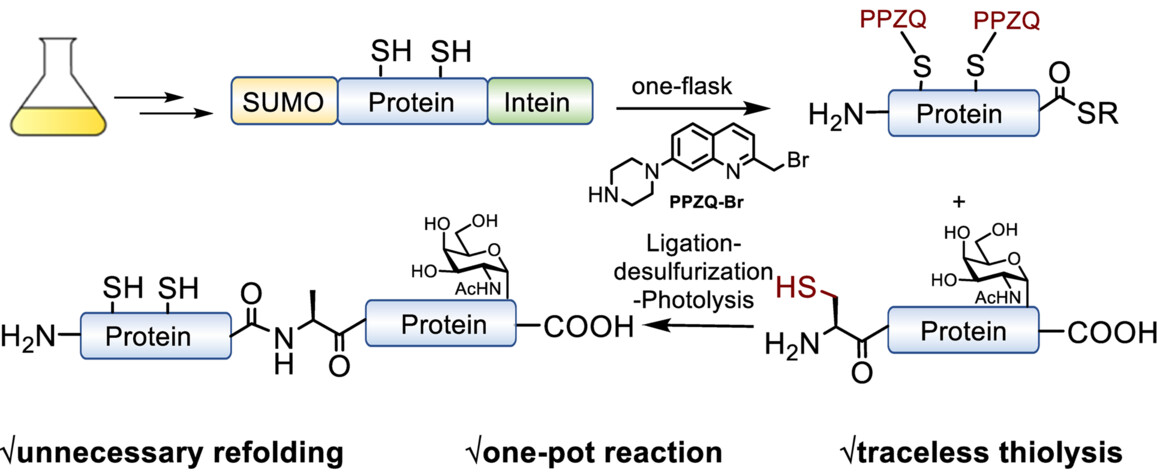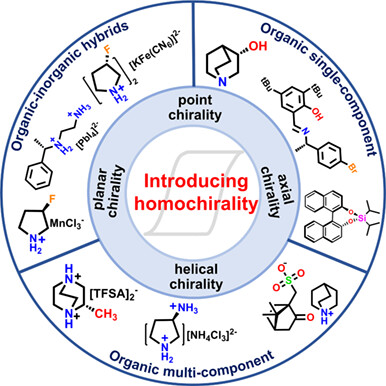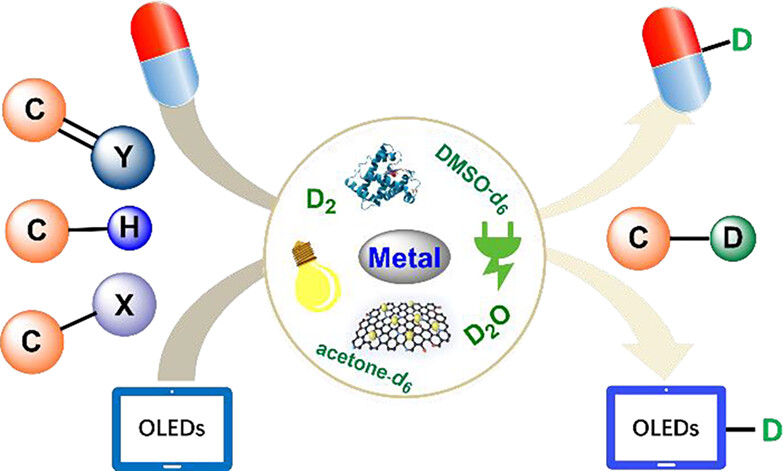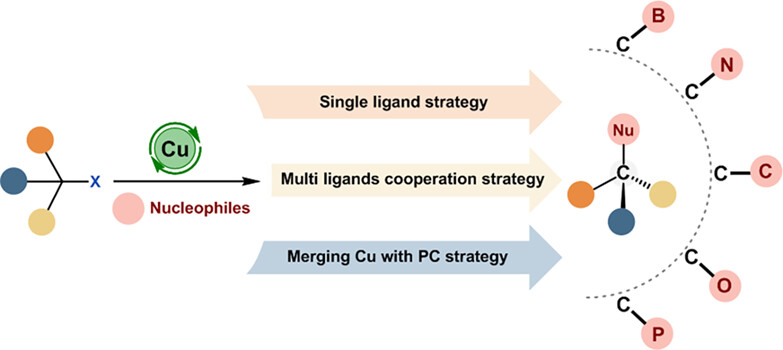Journal list menu
Export Citations
Download PDFs
Cover Picture
Cover Picture
- Page: 1061
- First Published: 15 April 2024
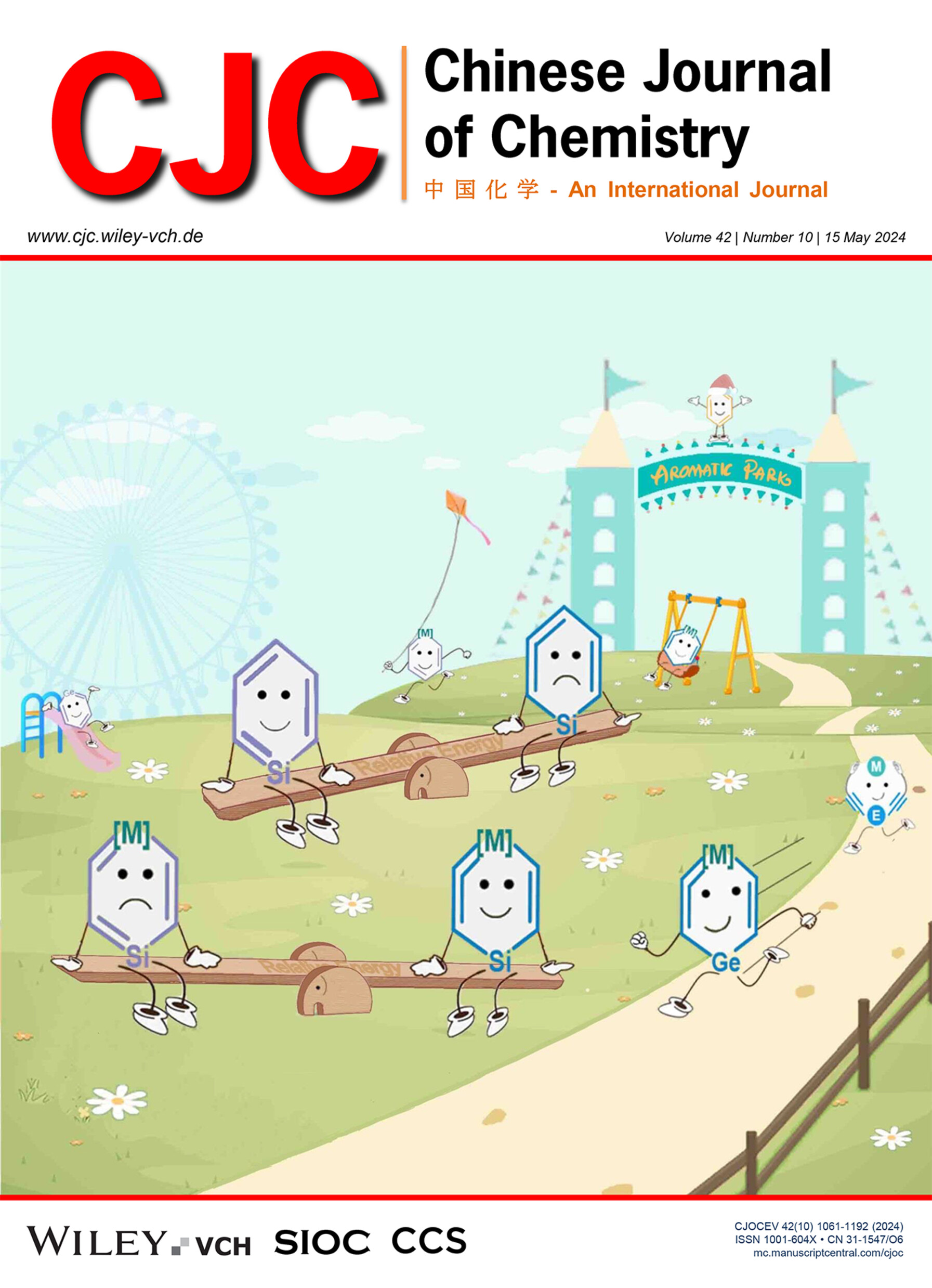
High-energy relatives of benzene have captured the imagination of chemists, especially those with cumulative double bonds which feature strained ring structure and lack any aromaticity stabilization. The integration of transition metals and Group 14 elements into six-membered cycloallene rings has been achieved by a [5+1]-cycloaddition of diethynylsilane or diethynylgermane with simple transition metal complexes. Experimental and computational studies demonstrate the stability of these unprecedent cycloallenes, i.e. metalla-isosilabenzenes and metalla-isogermabenzenes, may root in the decreasing strain on the cumulative double bonds. More details are discussed in the article by Zhang et al. on page 1121—1127.
Inside Cover Picture
Inside Cover Picture
- Page: 1062
- First Published: 15 April 2024
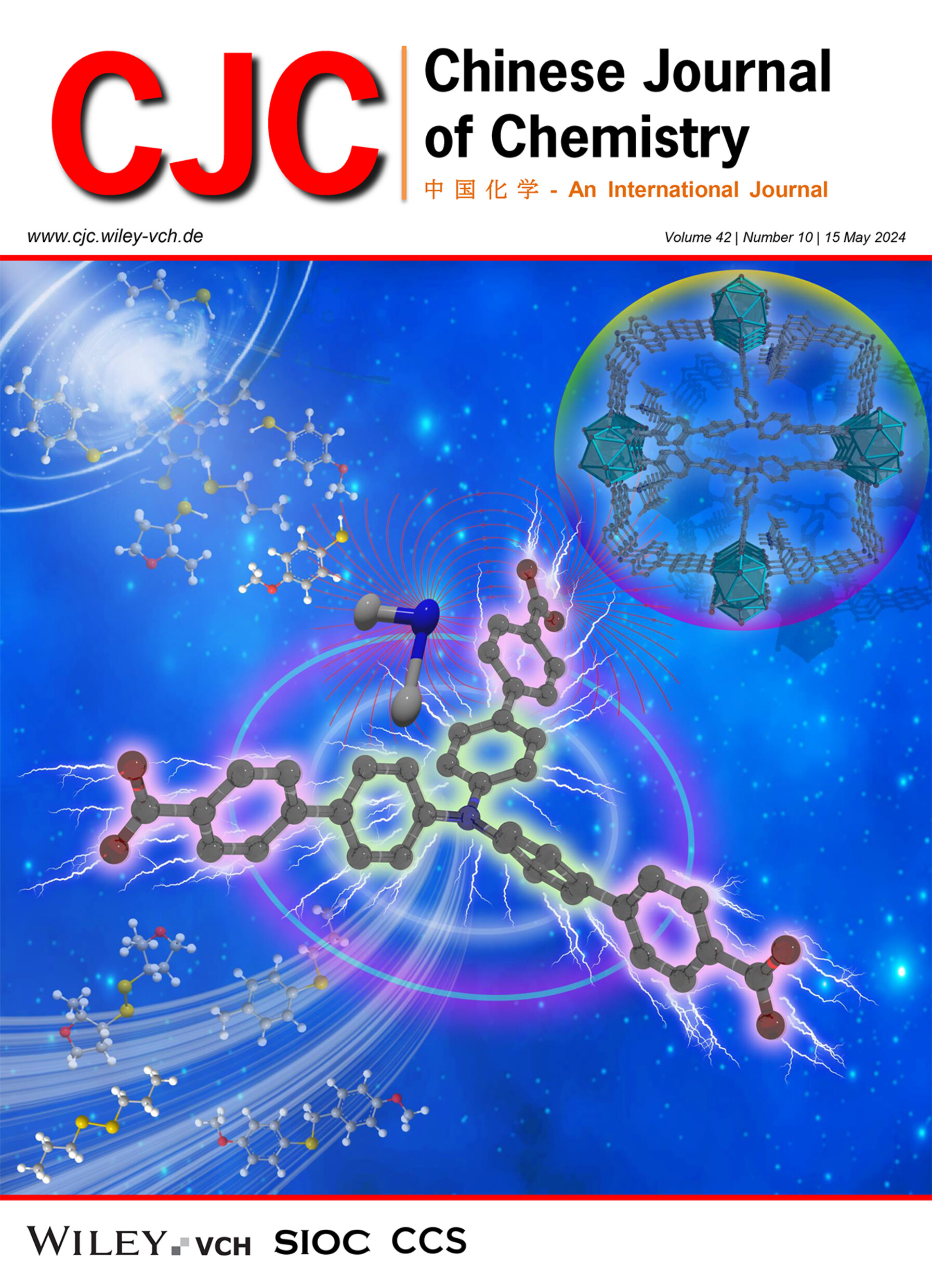
Triphenylamine and its derivatives (TPAs) are promising for the photocatalytic oxidative coupling of thiols to disulfides, but suffer from the easy polymerization and difficult separation. In this paper, by immobilizing the TPAs into MOF with photoredox inert Sr nodes, the photo-generated electrons were successfully controlled to transfer from the excited TPAs to O2, and finally realize the heterogeneous catalytic oxidation of thiols to disulfides. More details are discussed in the article by Zhang et al. on page 1093—1099.
Editorial
Contents
Concise Reports
Direct Analysis of Whole Blood by a Disposable Monolithic Column Mass Spectrometry Analysis Kit
- Pages: 1073-1078
- First Published: 22 January 2024

A disposable monolithic column mass spectrometry analysis kit was developed for direct whole blood analysis. The monolithic column can clean whole blood matrix in 30 s as well as avoid analyte exposure to oxygen, moisture and sunlight for sample storage. This MS kit has been successfully applied to the quantitative analysis of procainamide hydrochloride in 2 μL rat blood, proving it a cost-effective and powerful tool for in vitro diagnostics in the future.
1,3-Dipolar Cycloaddition of Polycyclic Aromatic Azomethine Ylides and Alkynylbenziodoxoles for Synthesis of Functional Dibenzoullazines
- Pages: 1079-1083
- First Published: 23 January 2024

A new family of dibenzoullazine derivatives was synthesized through 1,3-dipolar cycloaddition of polycyclic aromatic azomethine ylides with alkynylbenziodoxoles followed by oxidation. The benziodoxole moiety in the resulting products was used as a versatile linchpin for the synthesis of structurally diverse functional dibenzoullazines that are difficult to access by other synthetic methods.
Artemsieverolactones A—H, Eight Guaiane-Type Sesquiterpenoid Trimers from Artemisia sieversiana
- Pages: 1084-1092
- First Published: 23 January 2024
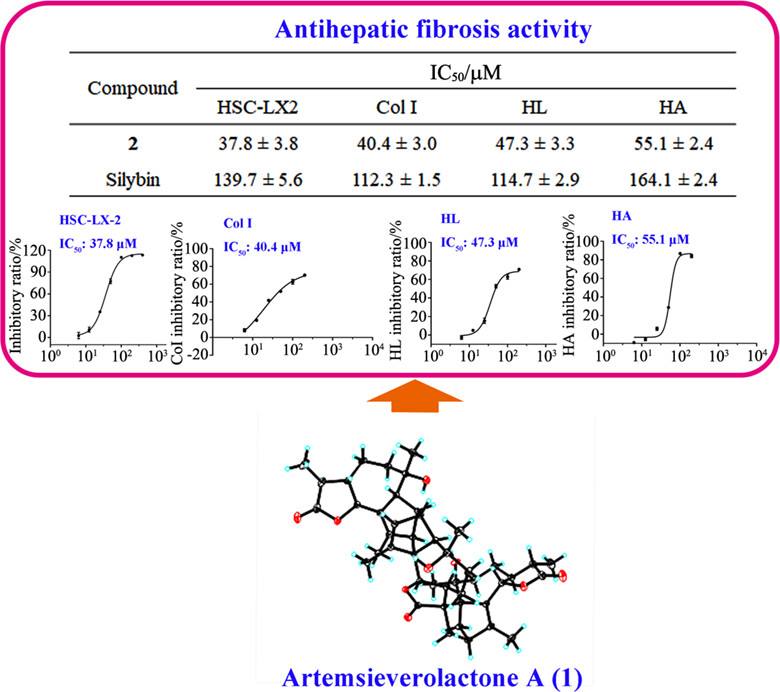
Bioassay-guided investigation led to the discovery of eight novel guaiane-type sesquiterpenoid trimers, artemsieverolactones A—H, which can be classified into four different types based on the connecting models of three guaianolide units. Most of the compounds showed inhibitory activity on HSC-LX2 cells. Artemsieverolactone B (2) exhibited significant inhibition on HSC-LX2 with an IC50 value of 37.8 μmol/L, and inhibited the deposition of human collagen type I (Col I), human hyaluronicacid (HA) and human laminin (HL) with IC50 values of 40.4, 47.3 and 55.1 μmol/L, respectively.
Immobilizing Triphenylamine with Photoredox Inert Sr2+ Forming Sr-MOF with Controlled Electron Migration for Photocatalytic Oxidation of Thiols to Disulfides
- Pages: 1093-1099
- First Published: 12 February 2024
Comprehensive Report
Hole-Transporting Materials with Rational Combination of Pyridine and Dibenzo[a,c]phenazine as Electron Acceptor for Dopant-Free Perovskite Solar Cells†
- Pages: 1100-1106
- First Published: 05 February 2024
![Hole-Transporting Materials with Rational Combination of Pyridine and Dibenzo[a,c]phenazine as Electron Acceptor for Dopant-Free Perovskite Solar Cells†](/cms/asset/0ad52f29-f1fb-437d-8fe0-cd672f25f326/cjoc202300658-toc-0001-m.jpg)
Based on rational combination of dibenzo[a,c]phenazine and pyridine as electronic acceptor and anchoring groups to perovskite layer, DPyP as a hole-transporting material in dopant-free PSC achieved high conversion efficiency of 20.45%, higher than that of DBP (19.77%) based on dibenzo[a,c]phenazine.
Breaking Reports
Access to Versatile Functionalized Cu(III) Complexes Enabled by Direct Transmetalation to Well-Defined Copper(III) Fluoride Complex Me4N+[Cu(CF3)3F]-
- Pages: 1107-1113
- First Published: 30 January 2024
![Access to Versatile Functionalized Cu(III) Complexes Enabled by Direct Transmetalation to Well-Defined Copper(III) Fluoride Complex Me4N+[Cu(CF3)3F]-](/cms/asset/a493ca03-9206-4b1e-88b8-9244c7dcb26a/cjoc202400041-toc-0001-m.jpg)
The invention of a well-defined Cu(III) fluoride complex Me4N+[Cu(CF3)3(F)]- 1 enabled to access a versatile of functionalized Cu(III) complexes [Me4N]+[Cu(X)(CF3)3]- (X = C6F5, C6F5C≡C, CN, Cl, N3, tBuOO, SCN, OAc, SAr), many of them for the first time. The availability of these complexes allowed us to evaluate the the trans-influence order of ligand in Cu(III) complexes: Bn > CF3– > C6F5– > N3– > py ~ CH3– ~ C6F5C≡C > NO2PhO– ~ tBuOO– ~ CH3COO– > F–.
Encouraging Solution to the Problem of Synthesizing Protein α-Thioester
- Pages: 1114-1120
- First Published: 05 February 2024
Heavier Group 14 Congeners of Metalla-isobenzenes: Access to Metalla-isosilabenzene and Metalla-isogermabenzene by One-Pot Reactions
- Pages: 1121-1127
- First Published: 05 February 2024
C—F Bond Insertion into Indoles with CHBr2F: An Efficient Method to Synthesize Fluorinated Quinolines and Quinolones
- Pages: 1128-1132
- First Published: 06 February 2024

A mild and practical method for synthesizing fluorinated quinoline derivatives, which have a wide range of applications in pharmaceuticals, materials, and organic synthesis, was described through C—F bond insertion into indoles using CHBr2F. The simple conditions, readily availability of CHBr2F, as well as the versatility of the transformations make this strategy very powerful in synthesizing 3-fluoroquinoline and 3-fluoroquinolone.
Chemistry Authors Up Close
Recent Advances
Emerging Topic
Organic Synthesis through Radical Innovation: Frustrated Radical Pairs
- Pages: 1157-1160
- First Published: 25 December 2023

Recent developments have led to the emergence of Frustrated Radical Pairs (FRPs) as an extension of the radical family. FRPs are formed from FLPs through Single Electron Transfer (SET) and exhibit the ability to activate a variety of chemical bonds. This review highlights the current state of FRPs in organic synthesis, delves into mechanistic insights, explores their potential, and underscores the challenges in this emerging field.
Critical Reviews
Copper Catalyzed Enantioconvergent Nucleophilic Substitutions
- Pages: 1161-1174
- First Published: 22 December 2023
Nanomedicine Disrupts Stromal Barriers to Augment Drug Penetration for Improved Cancer Therapy
- Pages: 1175-1189
- First Published: 07 December 2023
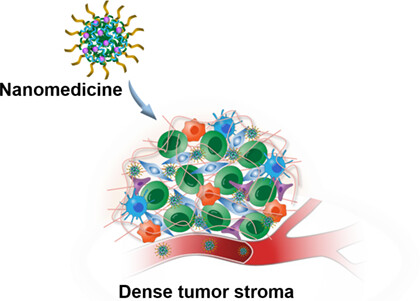
This review summarizes the typical nanostrategies to disrupt tumor stromal barrier for improved cancer therapy, and an up-to-date discussion on some representative studies for deep drug penetration is included, which provides exciting opportunities for designing newly emerging functional biomaterials in this field.
Inside Back Cover
Inside Back Cover
- Page: 1191
- First Published: 15 April 2024
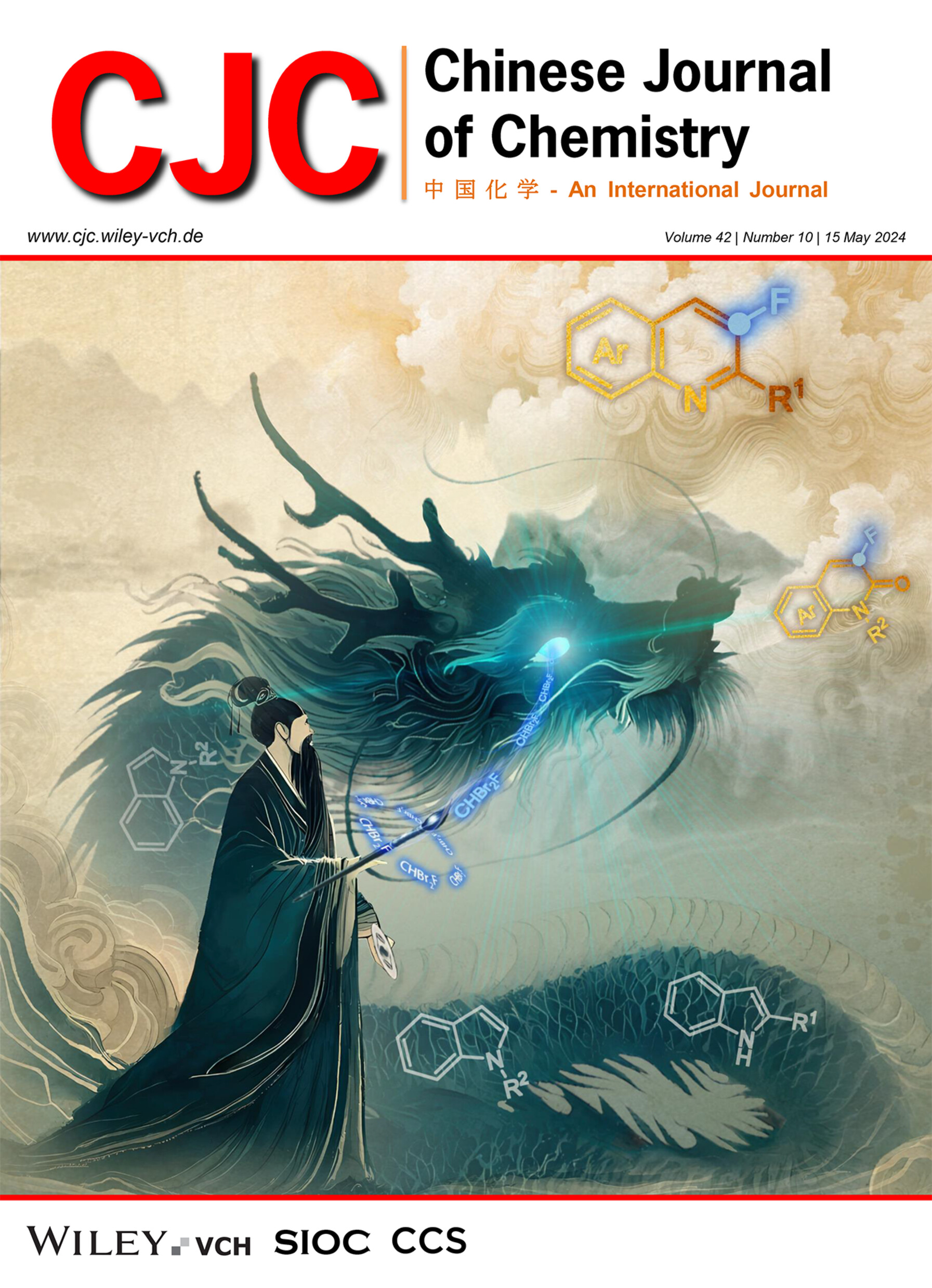
A mild and practical method for synthesizing fluorinated quinoline derivatives, which have a wide range of applications in pharmaceuticals, materials, and organic synthesis, was described through C—F bond insertion into indoles using CHBr2F. The simple conditions, readily availability of CHBr2F, as well as the versatility of the transformations make this strategy very powerful in synthesizing 3-fluoroquinoline and 3-fluoroquinolone. More details are discussed in the article by Song et al. on page 1128—1132.
Back Cover
Back Cover
- Page: 1192
- First Published: 15 April 2024
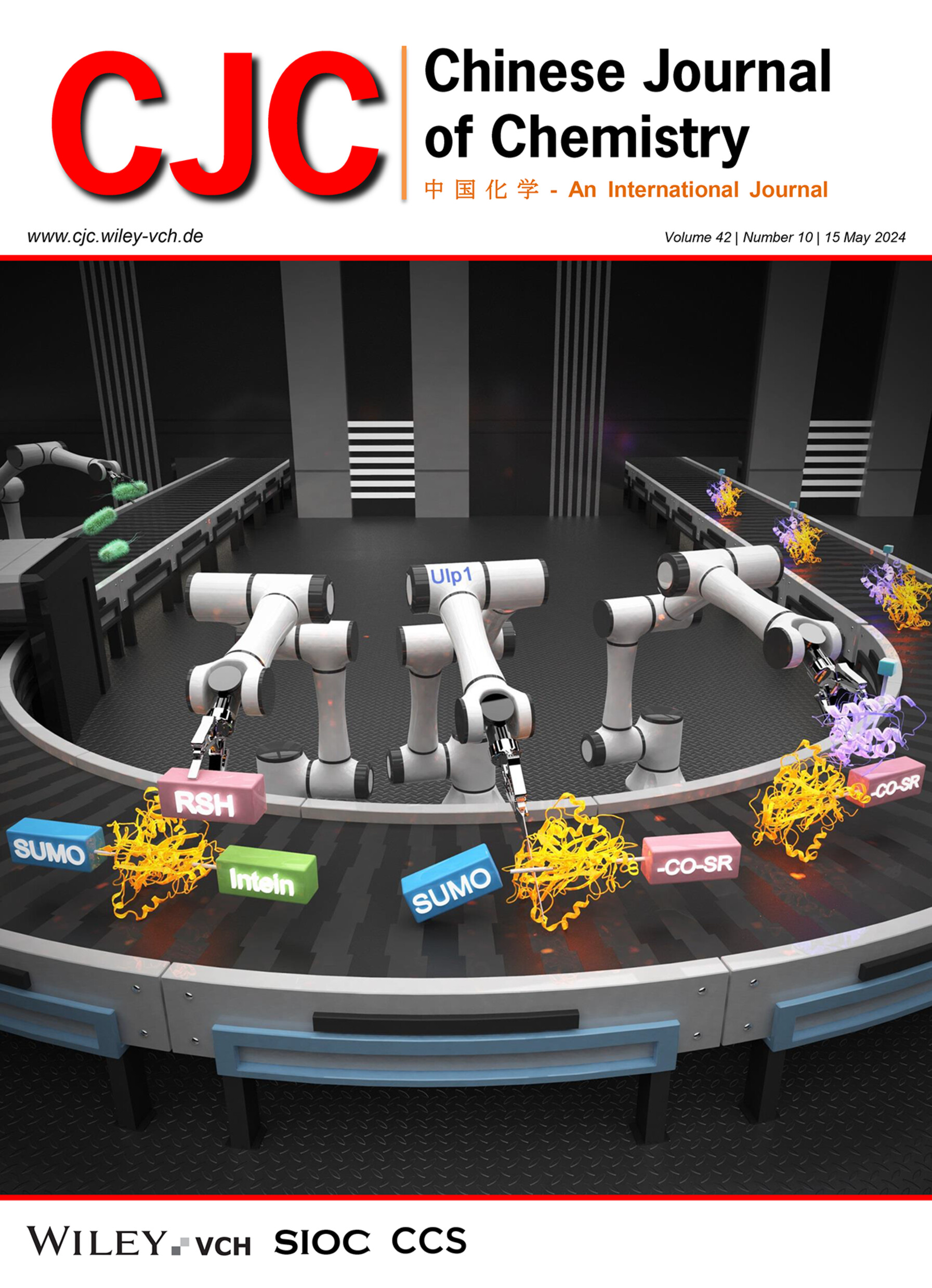
A facile one-flask preparation of inaccessible protein α-thioester via a SUMO-protein-intein (SPI) sandwich model has been developed. The protein thioester with internal Cys residues can be readily produced, which is otherwise difficult to obtain using traditional methods. Furthermore, this method is compatible with the EPL-desulfurization protocol used to prepare complex proteins. More details are discussed in the article by Wang et al. on page 1114—1120.




